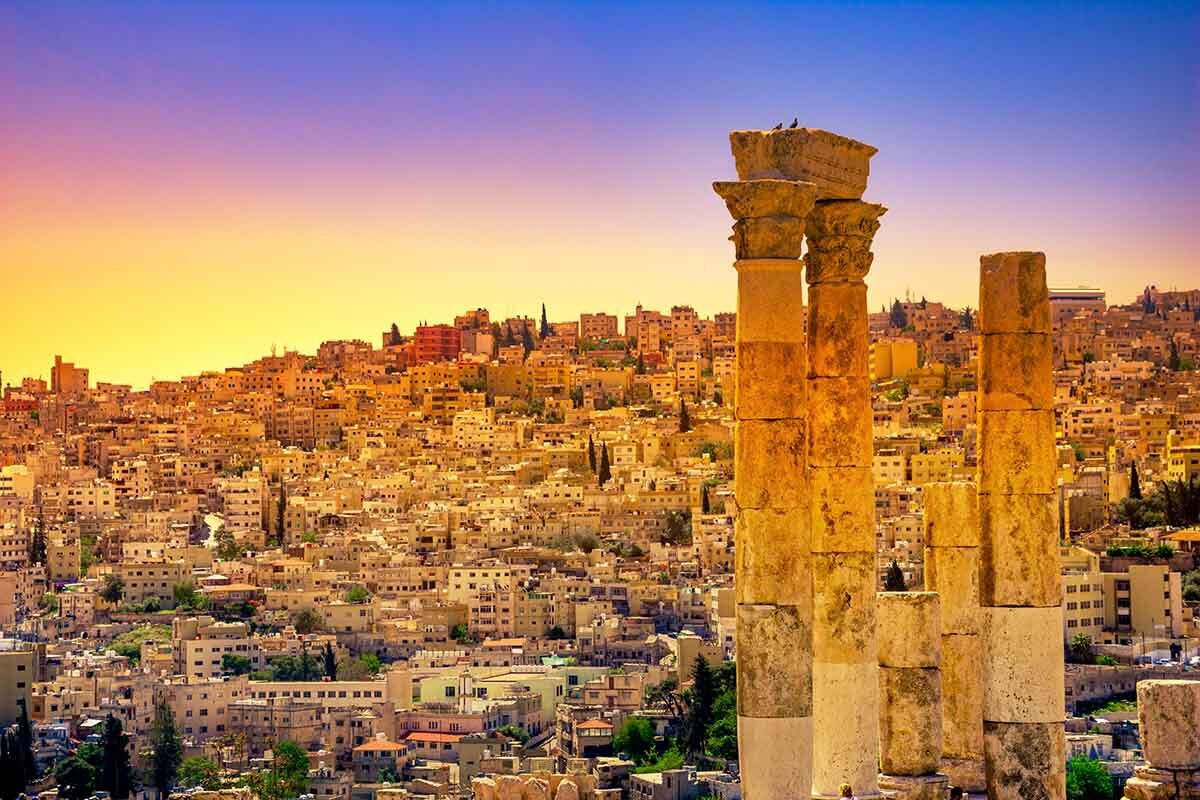Amman is the capital of Jordan and one of the oldest cities in the Middle East. This unique place blends traces of ancient civilizations with a modern way of life. Amman attracts travelers with its historical landmarks, vibrant markets, and a typical Eastern atmosphere. The city was originally built on seven hills, although today it spans many more. In this article, you will discover interesting facts about Amman that you might not have known before.
- Amman was originally built on seven hills, which is why it is sometimes called the Rome of the East. Today, the city extends over more than twenty hills. Each hill has its own name and character. This terrain gives the city a picturesque appearance.
- In ancient times, Amman was known as Rabbat Ammon, associated with the biblical Ammonite people. During the Hellenistic era, it was renamed Philadelphia in honor of Ptolemy II Philadelphus. The modern name revives its original roots. The city’s history stretches back over 5,000 years.
- In the heart of the city stands a well-preserved Roman amphitheater, which can hold around 6,000 spectators. It was built in the 2nd century AD. Today, it hosts performances and concerts. It is one of the most recognizable cultural symbols of Amman.
- Amman is home to over 4 million people, which represents about 40 percent of Jordan’s population. The city’s population increased rapidly in the 20th century due to the influx of refugees from Palestine, Iraq, and Syria. As a result, the city has become a mosaic of cultures. It is now one of the largest urban centers in the region.
- Buildings in Amman usually have a light, sandy color because local regulations require the use of limestone. This gives the entire urban area a harmonious look. This architectural tradition has been in place since the mid-20th century. The city appears uniform and elegant because of it.
- Amman is considered one of the safest cities in the Middle East. Jordan’s stable political situation attracts tourists and foreign investors. The city is also home to many international organizations. It plays an important role in regional diplomacy.
- One of the highest points in the city is the Citadel — an archaeological complex featuring remains of the Temple of Hercules and Byzantine structures. It offers a panoramic view of Amman. It is a must-see for history enthusiasts. Cultural events are also hosted at the site.
- Amman is a center for education and science in Jordan. It has over twenty universities, including the prestigious University of Jordan established in 1962. It attracts students from across the Arab world. Strong academic programs exist in medicine, computer science, and engineering.
- Popular local street foods include hummus, falafel, and the national dish mansaf — a lamb and yogurt-based meal. Numerous cafés and small eateries operate almost around the clock. The cuisine reflects the multicultural nature of the city. Many dishes are influenced by Palestinian and Syrian traditions.
- The city has a growing arts and cultural scene. Festivals, exhibitions, and theater performances are held regularly. Local galleries promote emerging artists. Amman is becoming a creative hub of the Middle East.
- The city’s public transportation system is undergoing modernization. Electronic ticketing has been introduced, and plans for a metro system are underway. Currently, minibuses and taxis are the main modes of transport. The city is also investing in greener solutions.
- The Archaeological Museum in Amman houses the oldest known human statues in the world, dating back to 8000 BC. They were discovered in the Ayn Ghazal settlement. These artifacts are a priceless window into the region’s prehistoric era. They attract researchers from around the globe.
- Amman became the capital only in 1921. Before that, it was a small settlement. The city grew significantly with the formation of the Hashemite Kingdom of Jordan. Today, Amman is not only the political center but also the economic and cultural heart of the country.
These fascinating facts reveal how rich and multifaceted Amman’s history truly is. The city blends ancient heritage with modern development in a unique Middle Eastern context. For travelers and researchers alike, it offers a treasure trove of discoveries. Amman is a dynamic capital that continues to grow and inspire.





